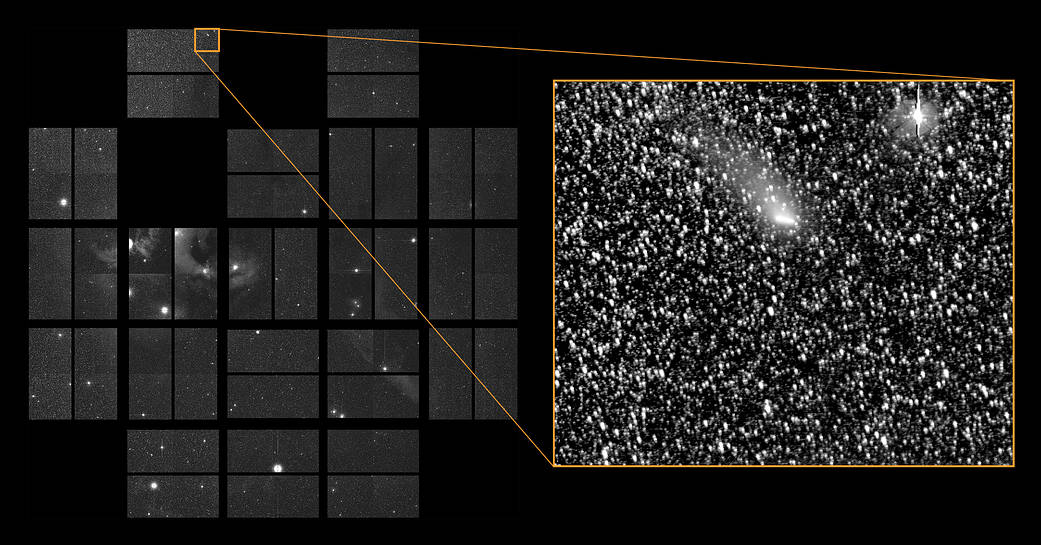On Oct. 20, the Kepler spacecraft joined the fleet of NASA science assets that observed distant Oort Cloud native Comet Siding Spring as it passed through K2’s Campaign 2 field-of-view on its long journey around the sun. The data collected by K2 will add to the study of the comet, giving scientists an invaluable opportunity to learn more about the materials, including water and carbon compounds, that existed during the formation of the solar system 4.6 billion years ago.
Taken by the Kepler spacecraft operating as the K2 mission, the full-frame image (left) is of the K2 Campaign 2 field-of-view. The image contains bright stars of the constellation Scorpius, with Antares just on the left edge of module-12 in the middle row second from the left. The globular clusters M4 and NGC 6144 can also be seen on module-12 along with the nebulosity of the well-studied rho-Ophiuchus star-forming region. In the upper right of module-2, the first visible module from the left in the top row, Comet Siding Springs can be seen.
The zoomed image (right) shows the nucleus and fuzzy trailing tail of Comet Siding Spring. Because the comet is moving rapidly, its nucleus is smeared over 20 pixels in this 30-minute exposure image causing it to appear oblong. The tail of the comet extends up and to the left from the nucleus. The comet moved through the K2 field-of-view in about 77 hours. A special purpose aperture was created to capture the comet as it moved through the image, allowing scientists to study its behavior just after the close encounter with Mars.
K2 is the two-wheel operation mode of the Kepler spacecraft. Based on a recommendation from the agency’s 2014 Senior Review of its operating missions, the K2 mission was approved to receive NASA funding for two years and officially began in May.
Image credit: NASA Ames/W Stenzel; SETI Institute/D Caldwell



























